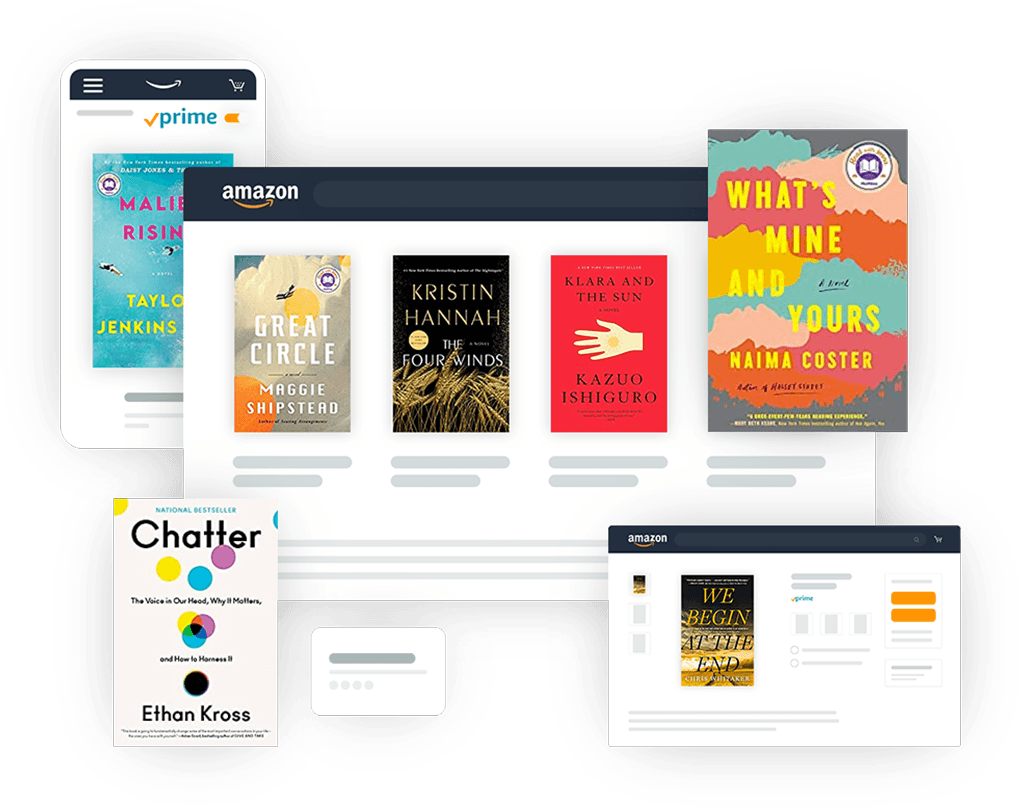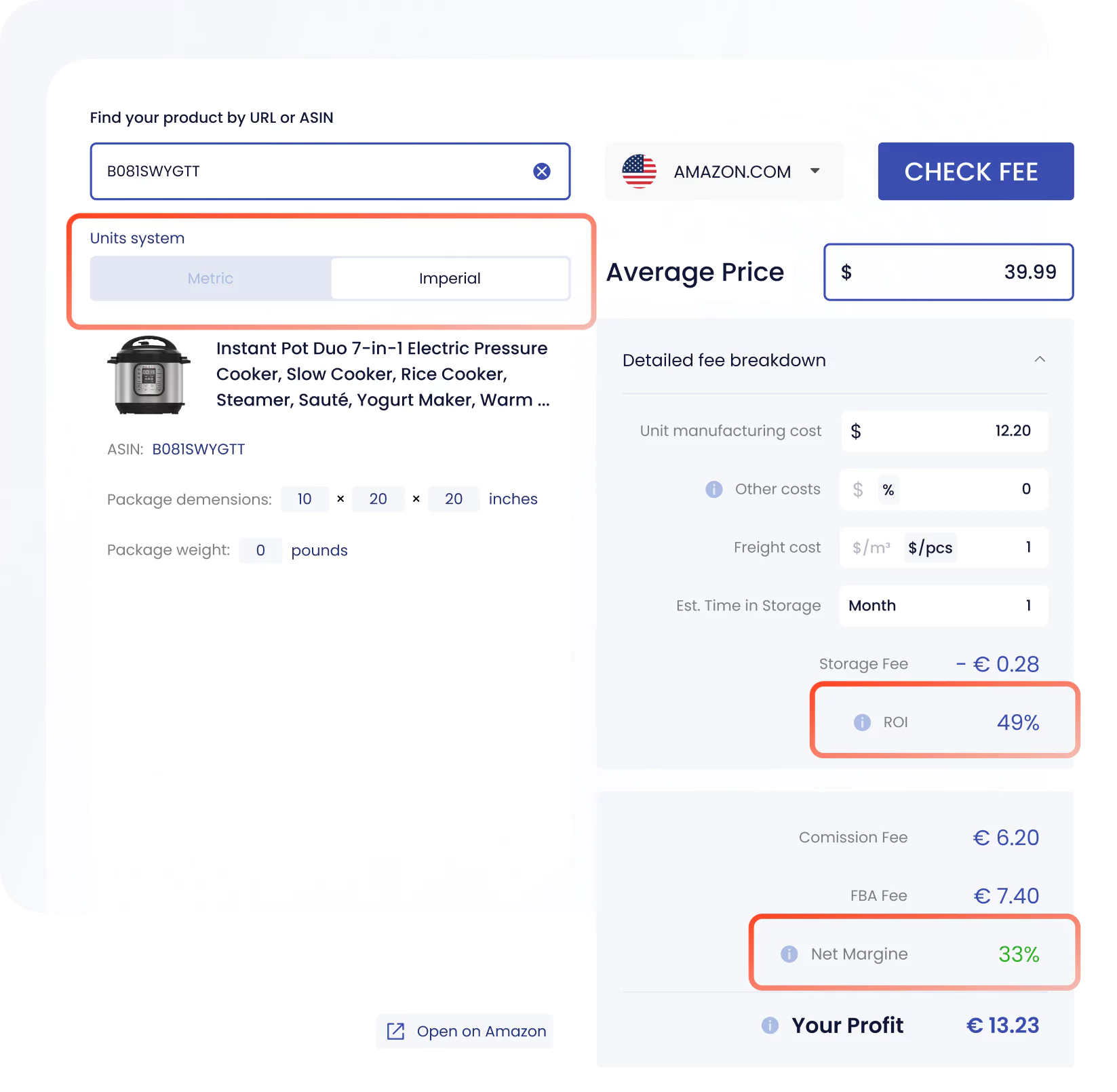Table of Contents
Are you an avid reader with a growing collection of books? Or perhaps you’re looking to venture into the world of online retail? To sell books on Amazon could be the perfect endeavor for you. With millions of customers worldwide, Amazon provides an unparalleled platform to reach a vast audience. Whether you’re an independent author, a small publisher, or just looking to clear some shelf space, Amazon offers a user-friendly interface and a global market reach that makes it an attractive option for booksellers.
So, how to sell books on Amazon? In this guide, we’ll cover everything from choosing the right fulfillment type to sourcing profitable books and listing them effectively. So, let’s get started on this exciting journey of turning your books into a thriving business!

Is It Worth It to Sell Books on Amazon in 2024?
In 2024, the prospect of selling textbooks on Amazon remains as promising as ever. The platform’s dominance in the e-commerce industry continues to grow, and the demand for new and used books remains strong. The platform’s vast customer base ensures a steady flow of potential buyers, providing an excellent opportunity for sellers to reach a global audience. Moreover, Amazon’s reputation for trustworthiness and convenience instills confidence in buyers, making it an ideal marketplace for both established sellers and newcomers.
One significant factor contributing to the worthiness of selling textbooks on Amazon in 2024 is the platform’s adaptability. Amazon constantly evolves its algorithms and features to enhance the buying and selling experience. This includes improved search functionalities, personalized recommendations, and user-friendly interfaces. These updates create a conducive environment for sellers to showcase their textbooks effectively. Additionally, Amazon’s robust fulfillment options, including FBA (Fulfillment by Amazon) and FBM (Fulfillment by Merchant), offer flexibility in how you choose to manage your inventory. This adaptability ensures sellers can tailor their strategies to suit their specific goals and resources. Overall, the continued growth and adaptability of the platform make it a good choice to sell books on Amazon in 2024.
Choose your fulfillment type
When it comes to selling textbooks on Amazon, choosing the right fulfillment type is a critical decision that can significantly impact your business. Fulfillment options dictate how your books are stored, packed, and shipped to customers. Amazon offers two primary fulfillment methods: FBA (Fulfillment by Amazon) and FBM (Fulfillment by Merchant). The choice between these two options will depend on various factors, including your resources, time availability, and overall business strategy.
Fulfillment by Amazon (FBA)
Fulfillment by Amazon is a comprehensive service provided by Amazon, where you send your inventory to Amazon’s fulfillment centers. Amazon takes over the storage, packaging, and shipping process. This means that once your works are in the fulfillment center, Amazon handles the logistics, including customer service and returns. FBA is an excellent option for sellers looking for a hassle-free approach. It allows you to tap into Amazon’s vast distribution network and use its renowned customer service. FBA also makes your listings eligible for Amazon Prime and other premium services, potentially attracting a wider customer base.
Fulfillment by Merchant (FBM)
Fulfillment by Merchant means you handle all aspects of storing, packing, and shipping your books directly to customers. This option provides more control over your inventory and allows for customization in packaging and branding. FBM is an attractive choice for sellers with an established logistical setup or who prefer a more hands-on approach to their business. It’s especially advantageous for sellers who deal with unique, personalized, or limited-edition books, as they have more control over the presentation and handling of each order.
Ultimately, the decision between FBA and FBM will depend on your individual circumstances. If you’re looking for convenience and wide market reach and want to leverage Amazon’s extensive infrastructure, FBA may be the way to go. On the other hand, if you prefer to retain control over the entire fulfillment process or have specialized textbooks that require specific handling, FBM might be the better option. Consider your resources, business goals, and the nature of your book inventory to make an informed choice.
New Books vs Used Books
When it comes to selling books on Amazon, one of the key decisions you’ll face is whether to offer new or used books in your inventory. This choice opens up unique opportunities for sellers, each with its advantages and considerations. Understanding the nuances between selling new and used products is crucial for making informed decisions that align with your business goals.
Selling New Books
Selling new textbooks on Amazon presents a range of exciting opportunities. You can tap into a market of readers who prefer pristine, unmarked pages by offering brand-new, untouched copies. New books often come with the added benefit of higher profit margins, as they command premium prices. For those looking to establish themselves as reliable sources for the latest releases or special editions, selling new items can lead to a strong and loyal customer base. Understanding how to effectively list and promote new books is crucial for success in this category.
Selling Used Books on Amazon
Shall you sell used books on Amazon? Learning how to sell used books on Amazon can be a profitable venture in its own right. This category caters to a different market segment – readers who value cost-effective options and don’t mind a bit of wear and tear. The process of offering used textbooks on Amazon involves accurate grading and descriptions, ensuring that potential buyers have a clear understanding of the book’s condition. Additionally, understanding the various fulfillment options, such as FBA and FBM, can be pivotal in your success when selling used books.
In summary, whether you choose to sell used books or new ones,, both avenues offer distinct advantages. Selling new textbooks can lead to higher profit margins and a dedicated customer base seeking the latest releases. On the other hand, selling used books opens up opportunities to cater to budget-conscious readers looking for well-loved classics or hard-to-find titles. By understanding the nuances of each category, you can create a well-rounded inventory that appeals to a broad spectrum of book enthusiasts.
Selling E-Books on Amazon

Selling e-books on Amazon offers a unique avenue for authors and publishers to reach a global audience in the digital age. Unlike physical books, e-books are digital files that can be downloaded and read on various electronic devices, from e-readers to tablets and smartphones. This format eliminates printing, shipping, and inventory management, making it a cost-effective option for content creators. Additionally, e-books offer immediate accessibility, allowing readers to acquire and start reading within moments of purchase. This convenience can be a significant draw for customers, especially those seeking instant gratification in their reading experience.
Furthermore, e-books allow authors to experiment with different pricing models, from traditional sales to subscription services like Kindle Unlimited. This flexibility can lead to higher royalties and potentially broader exposure for authors, especially those in niche markets. Additionally, e-books offer hyperlinks, multimedia integration, and adjustable text size, enhancing the reading experience for a diverse audience. Overall, selling e-books on Amazon opens up a dynamic digital marketplace, allowing authors and publishers to share their stories and knowledge with readers worldwide.
How to Search for a Profitable Book?
When selling books on Amazon, understanding market trends and sales data is crucial for making informed decisions. Analyzing the demand for specific books can greatly enhance your chances of success. In this section, we’ll provide a step-by-step guide on effectively searching for profitable textbooks on Amazon, utilizing tools like SellerSonar.
A step-by-step guide to analyzing books on Amazon
- Start with SellerSonar
Begin by utilizing SellerSonar, a powerful tool designed to help sellers monitor product listings and identify profitable products on Amazon. This tool provides valuable insights into sales trends, competition, and demand for various book categories. By leveraging SellerSonar’s features, you can gain a comprehensive understanding of the book market, allowing you to make data-driven decisions.
Don’t miss out on SellerSonar’s free 29-day trial. Register now and gain a competitive edge in the marketplace!
And the great part is that it provides a simple yet efficient free Amazon seller fees calculator. Just enter the ASIN or Amazon link to the book you wish to sell and get a full product profitability analysis. Unlike a basic fee estimator provided by Amazon, SellerSonar’s service more accurately handles expenditures and profit margin calculations. As a result, it allows sellers to see the bigger picture, measure their actual profits, and adjust their selling strategies.
- Select the Right Genre and Category
When selling textbooks on Amazon, choosing the right genre and category is essential for targeting a specific audience. Consider genres with steady demand and relatively lower competition. For instance, niche genres like self-help, mystery, and romance often have dedicated fan bases. Within these genres, drill down to specific categories that align with your interests and expertise.
- Analyze Sales Rank and Best Sellers
Pay close attention to the sales rank of books within your chosen genre and category. Lower sales ranks indicate higher sales frequency. Additionally, look for works that consistently rank as best sellers. This indicates sustained popularity and demand.
- Evaluate Customer Reviews and Ratings
Customer reviews and ratings provide invaluable feedback on a book’s quality and appeal. Analyze positive and negative reviews to understand what readers value and where there may be room for improvement.
- Monitor Pricing and Profit Margins
Compare the pricing of items within your chosen genre. Consider the format (e.g., paperback, hardcover, e-book) and condition (new or used). Ensure there is enough room for profit after accounting for costs such as acquisition, shipping, and Amazon fees.
- Stay Informed About Industry Trends
Keep an eye on broader industry trends, such as emerging genres, popular authors, and cultural phenomena. Awareness of these trends can help you identify potential opportunities and stay ahead of the curve.
Where to Buy a Book for Reselling?
When it comes to sourcing books for resale, knowing where to buy can make all the difference in the success of your book-selling venture. Fortunately, a variety of platforms and websites cater specifically to sellers looking to acquire new and used books. Here are some of the most popular and reliable options:
Book wholesalers
Ingram Content Group: Ingram is one of the largest book wholesalers in the world, offering a vast selection of new titles across various genres.
Baker & Taylor: Another reputable wholesaler, Baker & Taylor, provides a wide range of books, including bestsellers and niche titles.
Online marketplaces
Amazon Marketplace: Apart from selling on Amazon, you can also source items from other sellers on the platform. Keep an eye on discounted or clearance listings.
eBay: eBay offers a diverse range of books, both new and used, from individual sellers and stores.
AbeBooks: This online marketplace specializes in rare, used, and out-of-print books, making it an excellent resource for unique finds.
Thrift stores and charity shops
Goodwill: Goodwill stores often have a selection of books at affordable prices, particularly in the United States.
Salvation Army: Similar to Goodwill, the Salvation Army operates thrift stores that may offer a variety of books.
Library sales and book fairs
Many public libraries hold annual sales or book fairs selling donated or surplus books at discounted prices. These events can be goldmines for finding valuable books.
Estate sales and auctions
Estate sales often feature extensive collections of books, including rare or collectible titles. Keep an eye on local listings for upcoming sales.
Book trade shows
Industry events like BookExpo and regional book fairs provide opportunities to connect with publishers, distributors, and other sellers.
Online marketplaces for used books
ThriftBooks: This online bookstore offers a wide selection of used items at affordable prices, making it a popular choice for resellers.
Better World Books: Known for their commitment to literacy, Better World Books offers a range of used books with free shipping options.
Remember to consider shipping costs and potential seller fees when purchasing books for resale. Additionally, conduct thorough research on the condition and potential profitability of the books before making a purchase. With diligence and strategic sourcing, you can build a profitable inventory for your Amazon book-selling business.
How to List Your Books on Amazon
How to sell ebooks on Amazon? Listing your items on Amazon is a straightforward process that involves creating a detailed product page to showcase your inventory. This step is crucial in making your books discoverable to potential buyers. Below is a step-by-step guide on how to effectively list a book for sale on Amazon:
Step 1: Log In to Your Seller Account
Begin by logging in to your Amazon Seller Central account. If you don’t have one, you must sign up as a seller.
Step 2: Navigate to the Inventory Tab
Once logged in, go to the “Inventory” tab in your Seller Central dashboard. Here, you’ll find options to manage your listings.
Step 3: Add a New Product
Click on “Add a Product” to initiate the listing process.
Step 4: Search for Your Book’s ISBN or Title
Amazon will prompt you to search for your book using its ISBN, title, or author. This step helps identify the specific edition of the book you’re listing.
Step 5: Select the Correct Product
Amazon will display a list of matching products. Verify that the information matches your book, including the title, author, and edition. Select the correct product listing.
Step 6: Choose Your Condition
Indicate whether your book is new or used. Provide an accurate description of the book’s condition, including any wear and tear for used books.
Step 7: Set Your Price
Determine the price at which you’d like to sell the book. Consider factors like the book’s condition, competitive prices, and your desired profit margin.
Step 8: Fulfillment Method
Specify how you plan to fulfill orders. Choose Fulfillment by Amazon (FBA) or Merchant (FBM). If you choose FBA, you’ll need to send the book to an Amazon fulfillment center.
Step 9: Provide Detailed Information
Complete all relevant fields, including the book’s description, publisher, publication date, and any other pertinent details.
Step 10: Upload Images
Add clear and high-quality images of the book’s cover. This visual representation is essential for attracting potential buyers.
Step 11: Save and Finish
Once all information is entered, click “Save and Finish” to publish your listing.
Step 12: Monitor Your Listings
After listing your book, regularly check your Seller Central account for any updates, customer inquiries, or orders.
By following these steps, you’ll be well on your way to effectively listing your books on Amazon for sale. Remember to provide accurate and detailed information to give potential buyers confidence in their purchase.
Conclusion
In conclusion, selling textbooks on Amazon in 2024 offers a wealth of opportunities for both established sellers and newcomers alike. With a vast customer base and robust infrastructure, Amazon provides an ideal platform to reach a global audience. Whether you choose to sell new or used books, understanding market trends, utilizing effective fulfillment methods, and making informed listing decisions are key to a successful book-selling venture. Additionally, considering e-books as part of your inventory can expand your reach even further in the digital age.
Furthermore, to maximize your success, leveraging tools like SellerSonar for monitoring product listings can be a game-changer. It keeps you competitive by keeping tabs on competitor strategies, pricing trends, and customer feedback.
Take advantage of the demo to experience firsthand how SellerSonar can help you sell books on Amazon successfully.
With dedication, strategic sourcing, and attention to detail, you can embark on a rewarding journey in the world of book-selling on Amazon.


